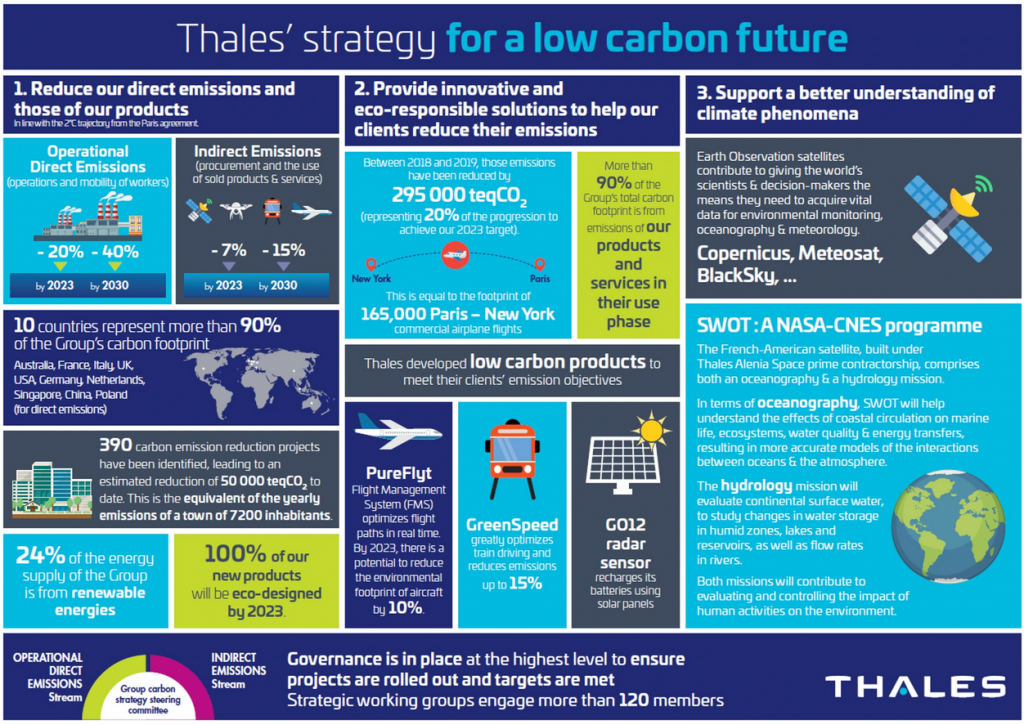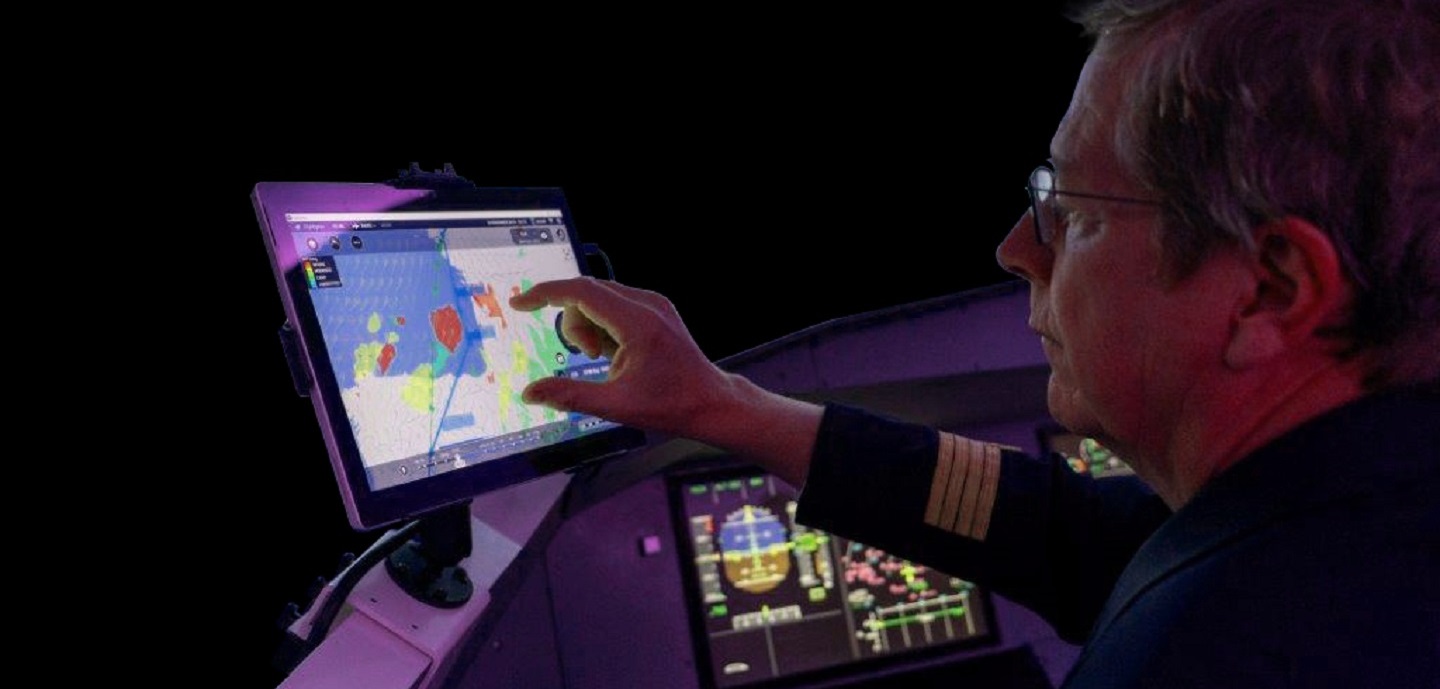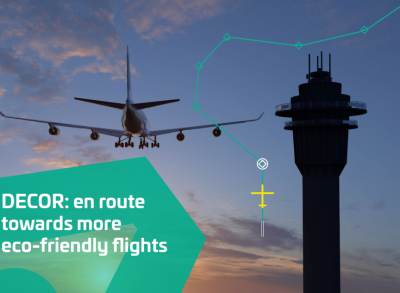How Thales technology can deliver short-term reductions in global CO2 emissions

Real-time flight path optimisation thanks to PureFlyt, the brains of tomorrow's aircraft
PureFlyt is the Flight Management System (FMS) of the future. Fully connected and scalable, it constantly monitors, adjusts and fine-tunes the trajectory of an aircraft to optimise the flight for fuel consumption and ensure better on-time performance and more comfortable flights for passengers and crews.
As the "brains" of tomorrow's aircraft, PureFlyt ingests information in real time from a larger number of sources, not only data from the aircraft's own systems but also external sources such as weather services.

The technology behind PureFlyt has reached an unprecedented level of maturity in the fields of cybersecurity and artificial intelligence. AI has been used in countless flight tests to simulate some two billion scenarios and clock up the equivalent of 100 million flight hours in cumulative experience.
Predictive modelling of global air traffic, updated every minute, to improve coordination of all flights and eliminate wastage
Beyond the flight management system, Thales innovations are also shaping the future of air traffic management. In addition to the onboard systems that make it possible to optimise traffic flows at the local level, and augmented connectivity between onboard systems and the air traffic control infrastructure, tomorrow's ground-based air traffic management systems will optimise traffic across one or several airspace control areas. This overall optimisation takes all flights into consideration to increase the impact of local optimisation within any given air traffic ecosystem.
Thales's new Air Traffic Flow Management (ATFM) system uses a predictive model of global air traffic to propose trajectories that are optimised in terms of environmental performance (pollution and noise). Every minute, the system also updates the trajectories based on actual aircraft positions and data on wind conditions and other climate phenomena.

By combining AI with Thales's expertise in trajectory prediction algorithms for flight management systems, it is possible to predict air traffic with a high degree of reliability, and thus anticipate the decisions that will need to be made. Decisions are proposed by the algorithm to optimise the use of all resources (fuel, airspace, taxiways, apron, etc.).
Developed on a collaborative platform and hosted in a secure cloud environment, these ATFM services can be quickly deployed and used over the Internet by all the stakeholders in the air traffic ecosystem (air traffic controllers, airport operators, airlines, maintenance providers).
The ATFM and PureFlyt systems combined are expected to reduce aircraft CO2 emissions by as much as 10% by 2023.
The e-Drive electric motor: a first step toward the hybrid aircraft
To recover the aircraft's kinetic energy, Thales is working on a hybrid solution combining conventional aero engines with electric motors to increase performance, improve overall energy efficiency and optimise the weight of the aircraft.
At the end of 2018, the Group unveiled its eDrive electric motor, which is designed to replace a helicopter's conventional powerplant for short periods in the event of a main engine failure. Single-engined helicopters equipped with this stand-by propulsion system could then be authorised to fly over urban areas, replacing twin-engined models that consume more fuel and are more expensive to operate.
Under the aerospace stimulus plan, Thales intends to further develop this concept to achieve a full hybrid propulsion solution that would cut fuel consumption and reduce rotor speeds to mitigate the noise pollution caused by helicopters.
Environmental management from space: value-added services
Under the Copernicus programme for the European Space Agency and the European Commission, Thales Alenia Space is to develop new measurement instruments for monitoring the environment and the effects of climate change.
As part of the Copernicus Carbon Dioxide Monitoring Mission (CO2M), these instruments will make it possible for the first time to measure levels of atmospheric CO2 caused by human activity and will provide Europe with a single source of independent information to assess the effectiveness of policy measures and their impact on Europe's carbon footprint. The satellite will map the entire planet every six days and provide complete measurement data every 12 days. By combining three separate instruments, it will determine the type of emissions with unprecedented accuracy (within 4 km2) to detect peaks in pollution around a factory, city, highway or air corridor.
The IRIS dual-frequency interferometric radar altimeter for the CRISTAL mission will also monitor the world's glaciers, measuring sea-ice thickness and overlying snow depth in polar regions with 36% better accuracy than its predecessor thanks to higher resolution. In the current period of rapid climate change, this data is crucial to climate monitoring in view of the significant influence of the polar regions on global climate models, thermohaline circulation and the planetary energy balance. Ice melt can only be estimated by assessing what is happening beneath the surface; with these higher-resolution measurements, it will be possible to determine with greater accuracy which areas are going to melt.
Smarter trains, metros and stations for greater energy savings
Advanced robotics technologies make it possible to increase the number of vehicles on the rail network, improve on-time performance and optimise energy consumption.
Driver advisory systems (GreenSpeedTM), Traffic Management Systems (TMS), and systems to manage automatic operation of both metros (GreenCBTC) and autonomous trains (RailBotTM) optimise energy consumption through carefully defined driving strategies and by calculating optimal acceleration and braking profiles in real time.
Anticipating network incidents is also an important factor in reducing unexpected train stoppages caused by obstacles on the tracks. Equipped with high-performance connected sensors, a train or metro will be able to detect any obstacles on its own track, but also on parallel tracks, to automatically inform track teams, plan on-site work or even resolve the issue remotely, helping to save energy.
Station supervision systems will analyse energy consumption in real time. Their sensors will determine exact energy needs depending on passenger flows, for example, to ensure that energy consumption matches requirements as closely as possible, while guaranteeing expected levels of performance and without sacrificing passenger comfort.
Eco-responsible AI: a major opportunity for environmental protection
AI and data-driven systems have both positive and negative environmental impacts. While AI helps to reduce energy consumption (optimisation of air and ground transport, smart cities, etc.), it also consumes large quantities of energy itself during production and in use, just like any other electronic system. Today, Thales researchers are working on a four-pronged approach to improve the environmental responsibility of artificial intelligence:
• Reducing the impact of AI during the production phase by applying eco-design principles to product development and developing software-defined equipment to mitigate obsolescence issues.
• Improving AI algorithms by factoring energy consumption into the design of neural network architectures, and whenever possible, prioritising the development of knowledge-based symbolic or hybrid AI, which is much more energy efficient
• Favouring data quality over quantity, and adopting distributed architectures that retain certain centralised functions when absolutely necessary, to optimise bandwidth usage, and therefore energy consumption, without sacrificing performance.
• Improving electronics and implementation by developing electronic circuits that consume very little energy and applications of spintronics, the electronics of tomorrow, for extensively connected analogue systems.
Read about Thales's strategy for a low-carbon future on the Thales website.





